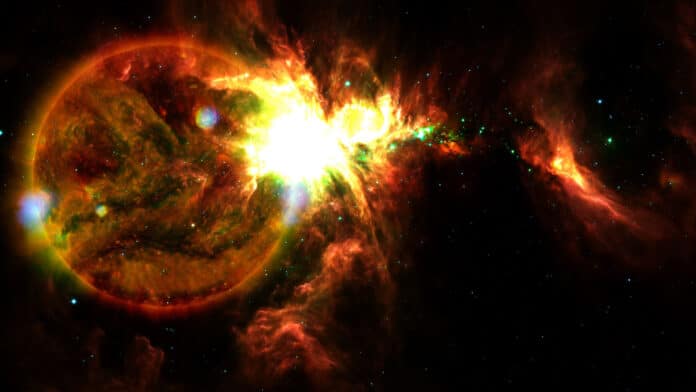The energetic expulsions of organized magnetic characteristics from the Sun are known as coronal mass ejections (CMEs). A potential connection between CMEs, solar flares, and geomagnetic disturbances can be established through research on CME quasiperiodicity.
If CMEs with variable geomagnetic efficacy have distinct periods, it can be determined by looking at the quasiperiodicity of the CMEs with varied angular widths.
Researchers from the Yunnan Observatories of the Chinese Academy of Sciences (CAS), under the direction of Prof. DENG Linhua, classified the CMEs from January 1, 1996, to August 31, 2021, by angular width. Their collaborators from Guangzhou University systematically examined the quasiperiodic variations corresponding to CMEs with different angular widths in the northern and southern hemispheres.
The team investigated the quasiperiodicity of CMEs with various angular widths based on the CME occurrence rate using the most recent Coordinated Data Analysis Workshops (CDAW) catalog. Four categories of CMEs—narrow, typical, partial-halo, and halo—were established. Researchers discovered that there were, in fact, different periods for CMEs with varying angular widths, including the Rieger-type periodicity, the ten rotations, and the quasi-biennial oscillations.
Prof. DENG said, “The occurrence rate of CMEs exhibits statistically significant short- and medium-range oscillations characterized by various periodicity, intermittency, and asymmetric development in the northern and southern solar hemispheres.”
The solar flare activity, solar wind, interplanetary magnetic field, and geomagnetic activity have all been linked to the quasi-periodicities of the CMEs discovered in this study. Consequently, the oscillations in coronal magnetic activity, solar flare eruptions, and interplanetary space should be connected via the quasiperiodic variations of the CMEs.
Prof. DENG said, “Our study can help to understand how magnetic energy is built up, stored, and released in magnetic flux systems, the origin and the formation process of CMEs, which are essential for solar physicists to reveal magnetic activity cycle and predict catastrophic space weather.”
Journal Reference:
- Xia Li, Hui Deng et al. Quasiperiodic Variations of Coronal Mass Ejections with Different Angular Widths. The Astrophysical Journal. DOI 10.3847/1538-4365/acb431
